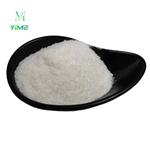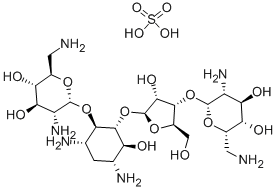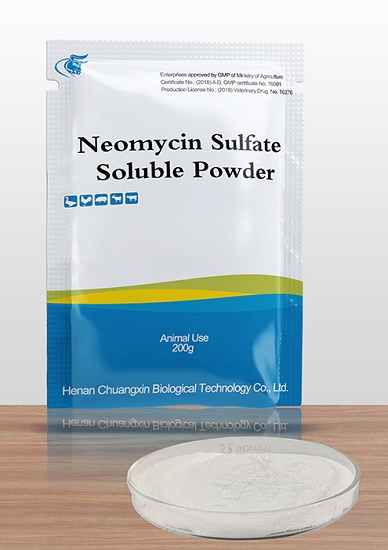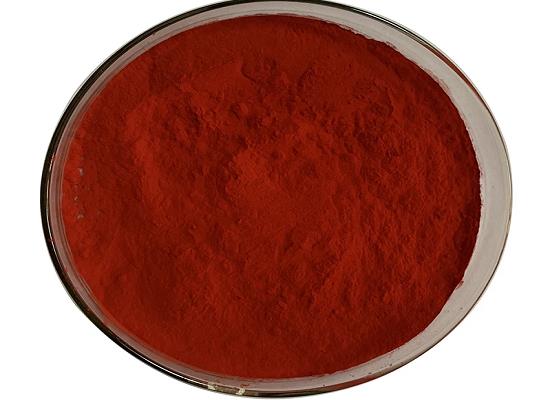Monitoring of Neomycin Sulfate Antibiotic in Microbial Fuel Cells
General Description
Recent advancements in neomycin sulfate detection have focused on utilizing microbial fuel cells (MFCs), which offer a simpler, cost-effective, and sensitive alternative to traditional methods. By incorporating specific biofilm coatings or nanomaterials, MFCs can selectively detect and quantify neomycin sulfate in water bodies. The monitoring of neomycin sulfate in MFCs has been achieved through indirect detection methods, such as LC-MS/MS, chemical oxygen demand, and total carbohydrate removal measurements. The performance of MFCs is affected by neomycin sulfate concentration, and partial degradation of the antibiotic occurs during the process. Computational chemistry approaches have provided insights into the bio-sensing activity of MFCs towards neomycin sulfate. Overall, electroactive biofilm-based MFCs show promise for sensitive detection, quantification, and partial degradation of neomycin sulfate in wastewater.

Figure 1. Neomycin sulfate
Advancements in Neomycin Sulfate Detection
Neomycin sulfate is a widely prescribed aminoglycosidic antibiotic, and its concentrations in pharmaceutical wastewaters have reached alarming levels due to increased usage. The high toxicity of neomycin sulfate to both environmental life and human health necessitates rapid and efficient online detection and quantification methods. Traditional methods like liquid chromatography (LC), LC-tandem MS, and immunoassays have been utilized for estimating neomycin concentration. However, these techniques are often complex, expensive, and lack sensitivity. Recently, there has been interest in utilizing the biosensing capabilities of microbial fuel cells for detecting and quantifying antibiotics in water bodies. Although limited data exists on using MFCs for neomycin detection, this approach shows promising potential. MFCs utilize the metabolic activity of microorganisms to produce electricity, and by incorporating specific biofilm coatings or nanomaterials, they can selectively detect target compounds like neomycin sulfate. This technique offers advantages such as simplicity, cost-effectiveness, and enhanced sensitivity compared to traditional methods. Further research and development are needed to optimize MFC-based neomycin detection systems, ensuring their practicality and accuracy. Advancements in neomycin sulfate detection using MFCs hold great promise for effective monitoring and control of this antibiotic in water bodies. 1
Monitoring of neomycin sulfate antibiotic in microbial fuel cells
The monitoring of neomycin sulfate antibiotic in microbial fuel cells was achieved through indirect detection and quantification methods. Several performance parameters were examined to evaluate the microbial fuel cells, including voltage generation, power density, current density, and coulombic efficiencies. The removal of neomycin sulfate was monitored using LC-MS/MS in conjunction with chemical oxygen demand and total carbohydrate removal measurements. It was observed that as neomycin sulfate concentration increased, the microbial fuel cell performance was affected and eventually inhibited. However, some partial degradation of neomycin sulfate occurred during the process. To further investigate the bio-sensing activity of the microbial fuel cell towards neomycin sulfate, a computational chemistry approach was employed. This approach provided information about the energy values of the highest occupied molecular orbital and lowest unoccupied molecular orbital, as well as their distribution and ionization potentials. The results demonstrated that electroactive biofilm-based microbial fuel cells could be used for the sensitive detection of neomycin sulfate in wastewater. Neomycin sulfate was successfully detected, quantified, and partially degraded in single chamber air-cathode microbial fuel cells operating with concentrations ranging from 20-100 mg/L. The biosensing activity of the microbial fuel cell was explained using computational approaches such as HOMO-LUMO energy calculations. Overall, this study highlights the potential of utilizing electroactive biofilm-based microbial fuel cells for the monitoring and detection of neomycin sulfate in wastewater. 1
Toxicity
The toxicity of neomycin sulfate, particularly in relation to breastfeeding, has limited available information. However, it is known that other aminoglycoside antibiotics are poorly excreted into breast milk. While small amounts of aminoglycosides may be absorbed by newborn infants, the resulting serum levels are significantly lower than those achieved during the treatment of newborn infections. Therefore, systemic effects of neomycin on infants are unlikely. It is recommended to monitor infants for potential effects on gastrointestinal flora, such as diarrhea, candidiasis (e.g., thrush, diaper rash), or rarely, blood in the stool, which may indicate antibiotic-associated colitis. When neomycin is administered orally, topically, ophthalmically, or otically, it is expected to yield very low levels in breast milk and pose negligible risk to the infant. However, caution should be exercised when applying neomycin topically to the nipple, as it may increase the risk of diarrhea in the infant. It is advisable to use only water-miscible cream or gel products on the breast to avoid exposing the infant to high levels of mineral paraffins through licking. In summary, although limited information is available, the potential risks associated with neomycin sulfate in breastfeeding appear to be minimal. Monitoring for possible gastrointestinal effects in infants is recommended. 2
Reference
1. Catal T, Yavaser S, Enisoglu-Atalay V, Bermek H, Ozilhan S. Monitoring of neomycin sulfate antibiotic in microbial fuel cells. Bioresour Technol. 2018, 268: 116-120.
2. Neomycin. Drugs and Lactation Database (LactMed), CASRN: 1404-04-2.
);You may like
Related articles And Qustion
See also
Lastest Price from Neomycin sulfate manufacturers

US $20.00/KG2024-04-26
- CAS:
- 1405-10-3
- Min. Order:
- 100KG
- Purity:
- 99%
- Supply Ability:
- 1000KG/day

US $1620.00-1600.00/metric tonnes2024-04-26
- CAS:
- 1405-10-3
- Min. Order:
- 1metric tonnes
- Purity:
- 99%
- Supply Ability:
- 10000tons



